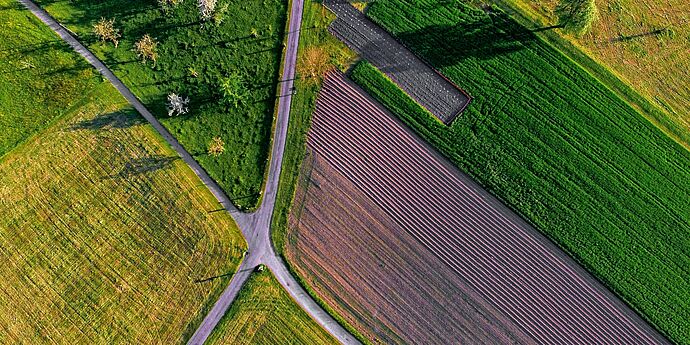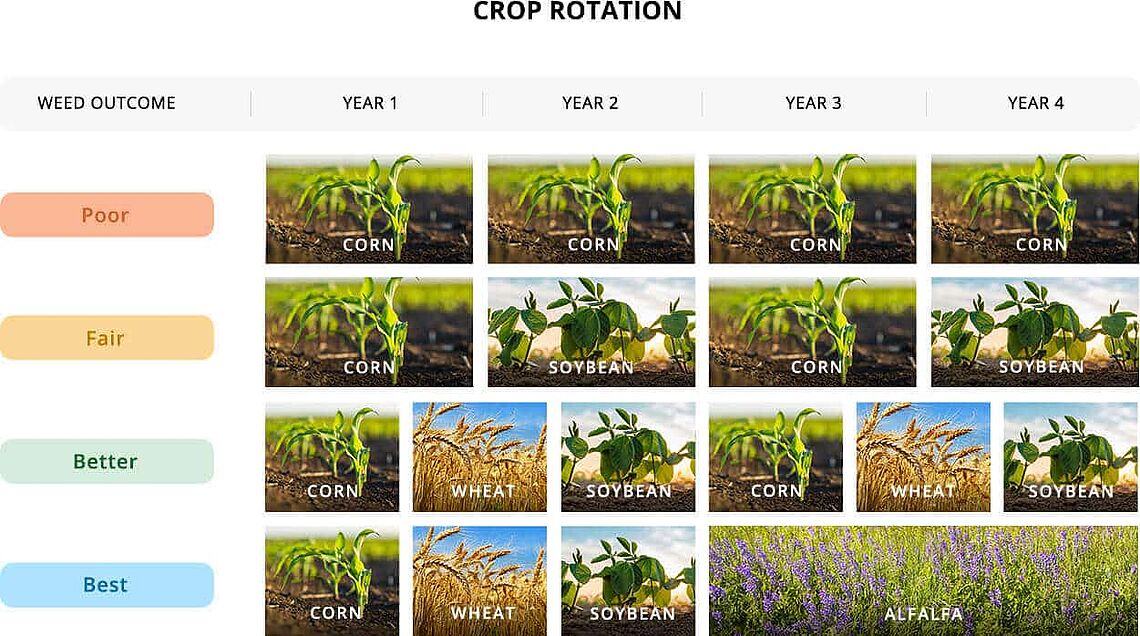Crop Rotation

Pupils define the terms crop rotation and monoculture, explore the advantages of crop rotations, and learn the reasons for crop rotation breaks. Additionally, they create their own crop rotation.
| Fächer | CLIL, Pflanzenbau und Grünlandwirtschaft |
| Erstellt von | DI Katharina Brader, HBLFA Francisco Josephinum Wieselburg |
| Dauer | 1 UE |
| Schulstufe | 10.-12. Schulstufe |
| Kompetenzen | Grundlagen aus Bodenkunde, Pflanzenschutz und Düngung |
| Lernziele | Die Schüler*innen können Fruchtfolge und Monokultur definieren. Sie können die Notwendigkeit der Fruchtfolge erklären. Die Schüler*innen können selbst Fruchtfolgen erstellen. Sie können das notwendige Fachvokabular anwenden. |
| Zusatzinformationen und Anmerkungen | Lernpaket zum Ausdrucken: Student's version (Word | PDF) Teacher's version (Word | PDF) |
Activity 1
a. Use the words from the box to fill in the missing words in the text below.
b. Are there any you don't understand? List them on the last page of the handout.
| repeated - field - year - crops - order - year |
What is a crop rotation?
A crop rotation is a series of different __________ planted in the same __________ in a defined __________ (i.e., maize - cotton - sunflowers or maize - soybeans).
Monoculture is the __________ planting of the same crop in the same field __________ after __________.
Activity 2
a. Select the correct words in the following text.
b. Are there any words you do not understand? List them on the last page of the handout.
What problems occur with monocultures?
In monocultures, increases in crop-specific pests and diseases / deformations are observed over time. Continuously growing the same crop will tend to exploit / nourish the same soil root zone, which can lead to a decrease in available soil organisms / nutrients for plant growth and to a decrease in root / insect development.
Activity 3
a. Watch the video “Why Do Farmers Rotate Crops? - Farm Basics." List the words you do not understand on the last page of the handout (download above). (Tip: use the subtitles to help with correct spelling.)
b. Watch the video again and list 4 benefits of crop rotation:
c. In addition to the video, what are some other benefits of crop rotations you know about?
d. What are three diseases and pests can be avoided by crop rotation? (If necessary, watch the video again.)
Activity 4
a. Using a book about crop production (i.e., “Pflanzenbau 1 – Grundlagen”) or researching on the Internet, complete this table of the recommended cultivation breaks of the following crops.
b. What could be possible reasons for the break? Add your reasons to the table.
Crop | Years of Break | Possible Reason (s) |
| wheat/barley | ||
| potatoes | ||
| soybeans | ||
| sugar beets | ||
| rapeseed | ||
| sunflowers |
c. Then, test your knowledge.
Activity 5
a. Read the "Rules for Crop Rotation" below.
b. Mark the key words. Are there any words you do not understand? List them on the last page of the student packet (download above).
c. Groupwork: Build a group of four and compare your results.
Rules for Crop Rotation
- Do not plant the same family of plants in the same spot 2 years in a row (because insects, nematodes, and pathogens are all attracted to specific kinds of plants so by mixing up the plant families you plant in a spot it helps prevent infection from pests).
- Do not grow the same kind of plant in the same spot 2 years in a row.
- Follow deep-rooted plants with shallow rooted plants and vice versa.
- When growing high yielding plants alternate them with low yielding plants that are very resistant to diseases.
- Alternate high effort plants with low effort plants.
- Preferably, have a 4-year cycle because many soil borne diseases stay in the soil for 3 years. Even if the plants are not affected, you can avoid the infection.
- It is good to have cover crops as part of your crop rotation as many of them build up the soil and some of them deter pests.
- The more crop rotation crops you cultivate, the better. (As illustrated in the image below.)
Activity 6: Presentation
a. As a group, plan two crop rotations with four parts.
b. Present result of your groupwork: your crop rotation plan including the reasons for each of your selections.
Your own crop rotation
| 1 | 2 | 3 | 4 |
